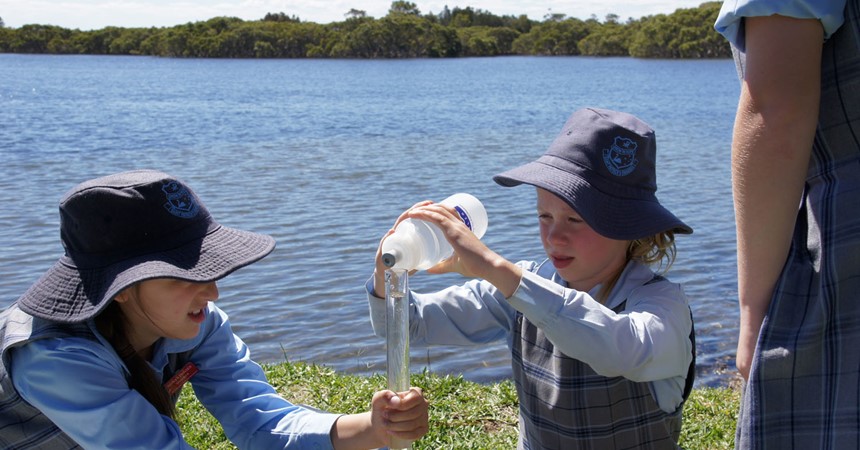The students understand that these waterways are part of their community, a place where they and their families live, work and play. Led by principal Peter Green, the school has found a unique way to help protect this beautiful aquatic environment that lies just beyond the “back fence”.
Eight times a year, senior Stage 3 students don their hats and, alongside teacher Mrs Cheryl Ogden, make the quick trek to the shore of the bay on the south side of the Swansea Channel. Here, having separated into groups, the students carefully collect water samples and test aspects of water health such as temperature, salinity, acidity and turbidity. After recording their results, the students return from their stunning outdoor classroom and upload their findings to NSW Waterwatch. The Waterwatch program, which is supported by Lake Macquarie City Council, gives the government an important picture of local waterways across the state, which helps in decision-making and environmental protection.
The long-term commitment by St Patrick’s to the Waterwatch program is an initiative of principal Peter Green, who contacted the council last year when teaching science to a senior class. Peter was looking for a way to engage the students with their environment in a “real world” manner that also benefited the local community. “The program has really made the students aware of the importance of water health and the role it plays in our local ecosystem,” said Peter. “We have found the students take more initiative in keeping the bay clean and they enjoy providing a real service to their community.”
Although the students enjoy themselves on the shore, the scientific nature of the testing is unmistakable. Instruments such as thermometers and electrical conductivity meters are used to test the water properties and students use historical results to ensure their readings are accurate. The popular turbidity test involves pouring the sample water into a long glass tube until coloured lines at the bottom become too hazy to see clearly. On a glassy spring day like this one, the tube overflows and the lines are easily visible beneath the crystal clear Swansea water. The students discover the water temperature is increasing in the spring sunshine and Mr Green makes a joke about going for a swim.
Classmate and school captain Izaac Stace explains how the partnership with Waterwatch extends beyond a school year. “Before they left the school, we were shown by last year’s class how to collect the samples and run the tests,” said Izaac. “At the end of the year, we will show next year’s class how to do it.” This commitment to the program by St Patrick’s is summarised by their principal. “In Swansea, people’s livelihood depends on a healthy channel,” said Peter. “The students appreciate this and are happy to give back.”






















































































